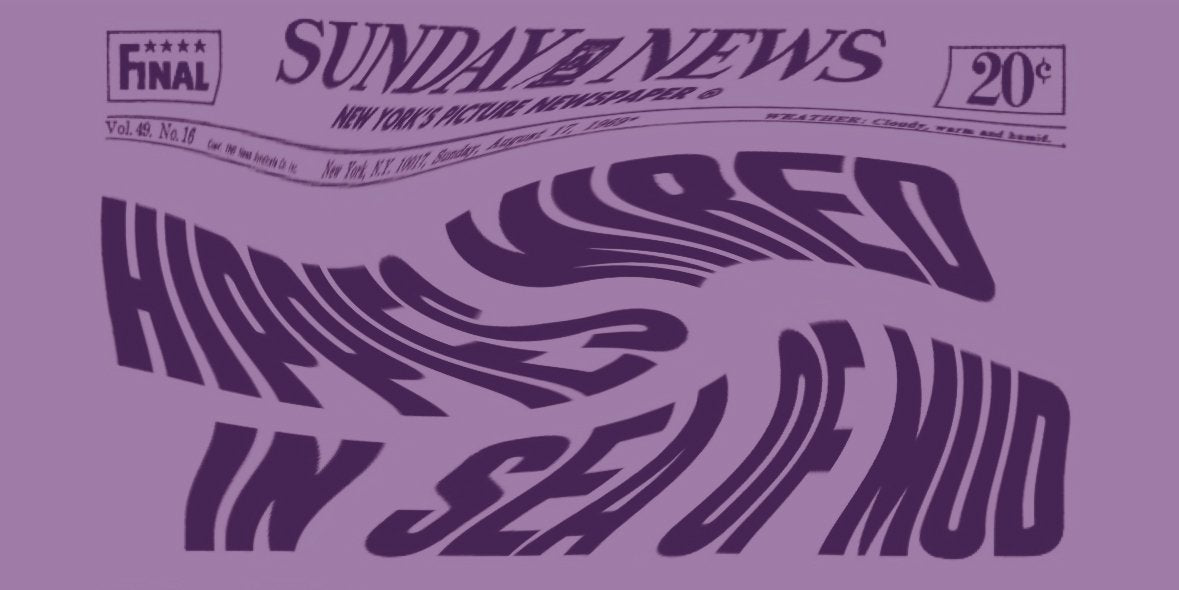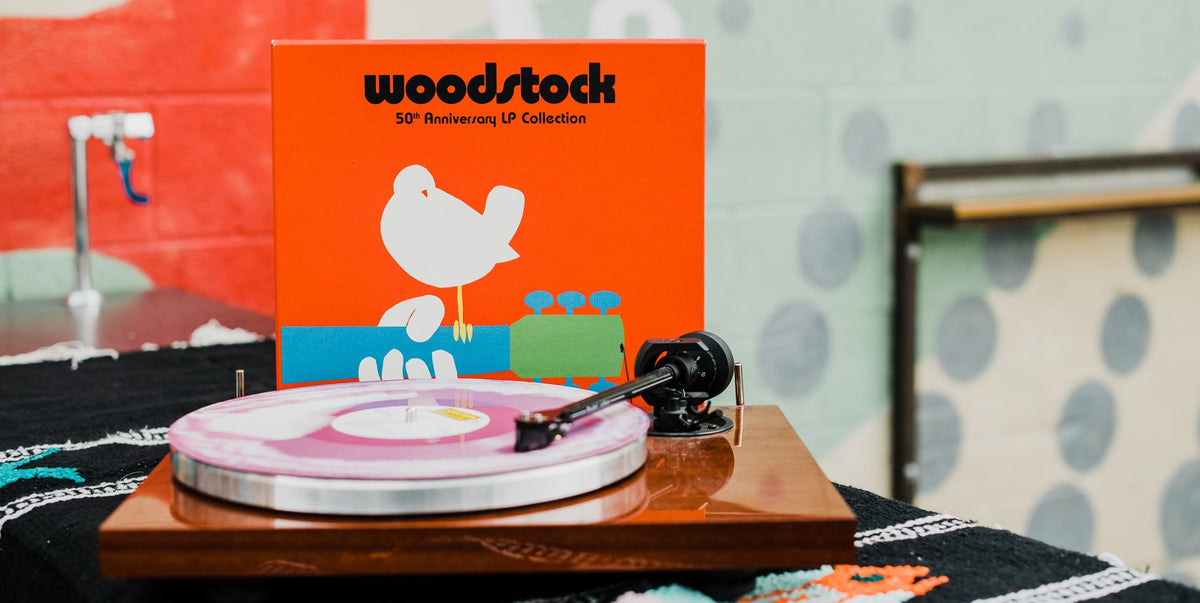The Who Were Woodstock’s Tightest Band
The Band Was Peaking Around The Festival. Why Did They Hate It?
For the great, era-defining British groups of the 1960s, the years between 1968 and 1971 were pivotal ones. The Beatles disintegrated and the Rolling Stones were in the midst of their creative peak. But arguably no band changed quite like the Who.
Up until that point, the Who were one of the truly great singles bands, renowned for incendiary live shows that culminated in feedback and destroyed instruments. By the end of 1971, they were the fully realized arena-ready powerhouse that unleashed anthems “Baba O’Riley” and “Won’t Get Fooled Again” on the world (and much, much later upon the opening credits of CBS procedurals).
The key year of that transition from rippin’ singles band to one for the ages was 1969. To dial it down further, you can pinpoint the two moments within that year when everything changed: the May 17 release of the seminal rock opera Tommy and the Who’s early morning performance on August 17, the second day of Woodstock.
Tommy matters because it changed the perception of Who guitarist/primary songwriter/overall mastermind Pete Townshend from a leader of the Mods to a serious composer, an auteur. Townshend had hinted toward more conceptual work a few years prior with the nine-minute mini-opera “A Quick One (While He’s Away),” but Tommy took the Who to new heights, featuring intricate arrangements and classical orchestration, vocal melodies that tested his and especially frontman Roger Daltrey’s range, and a 75-minute running time that pushed Townshend’s abilities as a storyteller. It was bigger in magnitude than anything the Who had done at that point and it hit just as the band itself was hitting its stride as, if not the best, probably the most loudest and mightiest live rock ’n’ roll band on the planet.
The Who always sounded potent on-stage. Between Townshend’s riffage and furious solos, John Entwistle’s fleet fingered-bass work and the mayhem ensuing behind Keith Moon’s drum kit, the music was never lacking in urgency or volume. But as the Who embarked on its North American tour in spring 1969, the biggest change live could be attributed to Roger Daltrey. He was coming into his own.
You could hear the difference in the run up to the Tommy tour. The Who’s set, as best heard on oft-bootlegged (and officially released in 2018) April 5/6 shows at the Fillmore East, was a mix of early singles and blues-rock covers. It’s on the latter material that Daltrey really shines. On songs like “Summertime Blues” and “Shakin’ All Over,” he’s a bolder, more confident vocalist, a powerhouse interpreter. This new assertiveness carried over to the recording of Tommy, where he showcased the full spectrum of his vocal abilities.
All of these factors, the creative peaks and personal growth, coalesced on the spring/summer 1969 tour. After spending April holed up rehearsing Tommy, the opus became the focal point of Who shows. By the time the Who rolled into scenic Bethel Woods for Woodstock, the setlist was established and the band was a focused, well-oiled machine.
Of course, the festival was not nearly as focused as the Who. That was a sprawling mess, in ways both charming and enervating. Originally slated to precede Jefferson Airplane on Saturday, the group stood waiting in the wings, ready to go, at 7 p.m. that evening. And then they kept waiting, finally taking the stage at 5 a.m. on Sunday.
In subsequent years, both Townshend and Daltrey have spoken negatively of their Woodstock experience. Both describe their time as miserable, the mixture of the wait, a hellscape of drugged-out, muddy hippies, and a stage with subpar sound equipment left the band in a foul mood before, during, and after their performance. Once that performance came to fruition, the Who unleashed that frustration and hostility upon a half-million, mostly sleeping sea of humanity.
The whole affair kicks off with a crushing one-two punch. First is the pummeling Jon Entwistle-led “Heaven and Hell.” Up next is “I Can’t Explain.” Originally released as the very first Who single in 1965, it was always a hot track. But by the time it was played at Woodstock, “I Can’t Explain” was more than a catchy two-minute pop-rocker; it was a brawny hard rock song. Daltrey hollers and swaggers with confidence, Townshend’s riff and solo cut like a buzzsaw and Moon just unloads on his kit.
From there, with neither fanfare nor introduction, it’s onto nearly the entirety of Tommy. And in front of 400,000-plus concertgoers, the full potential of the Who and their opus were realized.
The transition to the concept album is immediate; once “It’s a Boy” begins the Tommy experience, the level of focus is palpable. With one notable exception (more on that later), there’s no stage banter, the normally chatty Townshend is silent. The album itself is essentially a theater piece and on-stage, the Who presents the material as such. The biggest difference is that although the studio versions of the 16 tracks performed were pristine and precious in construct, the live renditions explode from the stage.
“Eyesight to the Blind (The Hawker)” comes in hot, with a heightened urgency to both the music and Daltrey’s delivery. It segues into “Christmas” and “The Acid Queen,” and this triptych underscores the wild emotions that lay within Tommy, ones evident on the LP to an engaged listener but at Woodstock they’re pushed to the forefront and unavoidable.
You can hear the desperation in Tommy’s family on “Christmas.” Townshend, a bit reined in on the record, sounds unhinged on the “Tommy can you hear me” plea. There’s real despair and anguish in his voice. On the other two tracks, the live arrangement is lethal. Moon is untethered from the restraints of the studio and sets a torrid pace. Entwistle maintains a heavy, steady low-end rumble, while Townshend windmills and plays hot licks. By eschewing the acoustic guitars and instrumental layers, this cacophony of sound serves to highlight the mania of Tommy’s parents seeking out a pimp and prostitute to ply the pinball savant with drugs and sex to cure him.
While the horror of Tommy is expanded upon live, so are the emotional highs. “Pinball Wizard” maintains its sense of wonder and serves as a break from the gloom and doom it’s sandwiched between. On “I’m Free,” Townshend gets in a frenetic solo, Moon offers up some wild fills and Daltrey belts it out with the passion you’d assume one who is suddenly no longer deaf, dumb and blind would feel.
It all builds to the emotional climax of the set: “See Me, Feel Me.” It hits with the dawn, the first rays of the morning sun drifting onto the stage as Townshend windmills and Daltrey nearly shouts himself hoarse on the “Listening to you” portion of the song. The video of it, immortalized in the Woodstock documentary, provides an audiovisual record of one of the most incredible live experiences one could witness at any concert. Its transcendence is as such that you’d be forgiven for forgetting that the Who plays three more songs, covers of “Summertime Blues” and “Shakin’ All Over” and the closing “My Generation,” that are blues-rock on steroids.
“See Me, Feel Me” wasn’t the only highly charged, emotional moment of the Woodstock set. It’s the one that stands the test of time from a musical standpoint. The fact it happened at Woodstock is incidental. The other moment is unique to the time period and the event and also inadvertently reveals just how odd the Who’s appearance and performance at Woodstock really was.
As “Pinball Wizard” closes, hippie provocateur Abbie Hoffman bum-rushes the stage to call for MC5 manager/White Panther Party leader John Sinclair to be released from prison on pumped-up dope charges. It’s a quintessentially late-1960s thing to happen. Hoffman picked the wrong set and act to interrupt, however. For his troubles and polemic, he received a blow from Townshend’s guitar and a threat from Pete to “Fuck off! Fuck off my fucking stage!”
Because while the Who were there at Woodstock, it wasn’t about peace, love, and justice. It was about the band’s own journey and quality of performance. And, quibbles over the hippies and the scene aside, there was more than enough to be happy about at Woodstock that they’ve felt compelled to revisit it throughout the years.
In the aftermath of the Who’s set, the band and management felt inspired to officially record a live album. The product of that decision was Live at Leeds, a consensus critical pick as one of the greatest live albums of all time. And in 1970, when the Who headlined the Isle of Wight festival in front of an audience of 600,000 people, the group chose to recreate the dramatic effect of that Woodstock closing sequence. They weren’t performing in the pre-dawn hours, so they brought in massive spotlights to flood the stage and audience in light during “See Me, Feel Me.”
In June, Roger Daltrey released a live recording with a symphony orchestra and members of the current touring Who band of Tommy in its entirety. And the site of the bulk of its recording?
Bethel, New York.
Jim Shahen is a music writer from parts around Albany, NY. He's figuring it out.
Related Articles
Join the Club!
Join Now, Starting at $36Pages






